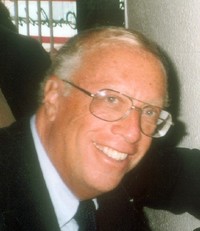By Rabbi Dr. Israel Drazin

BOCA RATON, Florida — The popular best-selling author Jonathan Kellerman is right to call The Hidden Saint “ingenious” and “compelling.”
Many ancient Jews and non-Jews, as well as many modern people, are convinced that the world is filled with evil-producing demons of many types. The most acclaimed Bible and Talmud commentator, whose commentaries on the Bible are taught to young Jewish school children, Rashi (1040-1105), believed they existed. As a joke, I once wrote that Rashi was so fearful of demons that before exiting his house, he would quietly and carefully open his door, sneak a peek to the right and to the left, the right being first as always, assure himself that no demon was lurking outside his dwelling, and only then exit his house.
The Talmud warns people not to drink from a barrel of water that remained uncovered overnight. Rashi explained that the barrel probably contained a demon who entered it in the dark. Rashi’s grandson Rashbam mocked his granddad for his views. He explained that the Talmud was warning people not to drink uncovered water which most likely became polluted with dirt and germs during the night.
The famed mystic Nachmanides (1194-1270), held similar ideas, many of which I describe in my book Nachmanides, An Unusual Thinker. He should not be confused with the rational thinker Maimonides (1138-1204) who, like Rashbam, mocked such views. I made a similar joke about Nachmanides as I did about Rashi. A mystically minded rabbi overheard me and was so shocked to hear his hero Nachmanides mocked that he told his shammas (sexton) to punish me by not giving me an honor of being called to make a blessing over the Torah when it is read in the synagogue.
Being superstitious, he allowed an exception. I was permitted to be called to the Torah on the anniversary of the death of my parents. The rabbi believed and so taught his congregants that saying the Torah blessing on the yahrzeit, the anniversary of death, would “elevate” the soul of my parents, raise them to a higher level in the world to come. This idea, called illui neshama, was only developed a couple of centuries ago. He felt my parents should not be punished for my sin. I declined the honor since I considered illui neshama superstition.
The famed codifier Rabbi Joseph Karo (1488-1575) placed in his Shulchan Arukh, his Code of Jewish Law, the rule that Jews should wash their hands three times when they awake because of the likelihood that the hands contain demons that invaded the body during the sleep. (The magical three times is in contrast to the two times Jews wash before eating bread.) Rabbi Karo added that the Jew must be careful not to spill any of the water on the floor because doing so would contaminate the home with the demons still alive in the water. Maimonides did not include the three-washing practice or anything similar in his Mishneh Torah, his code of Jewish law.
The non-Jewish biblical scholar Bart D. Ehrman along with many other currently living New Testament scholars feel certain that Jesus believed that the world was filled with demons and other evils and taught his disciples that God would rid the world of this malevolency during their lifetime.
Demons are mentioned in the New Testament Gospel of Mark and other New Testament writings. In Mark 6:7, for example, Jesus tells his disciples to cast out demons. In Mark 1:24, 3:11, and 5:7, Demons recognize Jesus as the messiah.
These are just five of many examples of beliefs in superstitions that I could mention.

Mark Levenson’s The Hidden Saint is a very interesting look at the life of Jews in Russia in 1745 and soon after, when virtually all people of all religions had many superstitious ideas which controlled and distorted their lives, and corrupted how they treated other people. We read of physical battles between a human and demons, of a person being turned into a donkey, of making people do acts contrary to what they want and what is good for them, making men, women and children disappear. And more, much more.
The story focuses on Rabbi Adam, a golem, a huge seven-foot man made by Rabbi Adam out of clay, the chief demon the female Lilith, demons of all sorts, and the 36 righteous men whom Jewish myth declares must exist so that the world will be sustained and not end – if one died and was not immediately replaced, the world would end.
When the tale begins, Adam is a young man on his way to the synagogue to marry the young woman whom he loves dearly. He suddenly realizes that he forgot the wedding ring at home. He turns back to his home to get it, and disappears.
We read next that 25 years later Adam had come to a small town as a young man, not knowing how he got there, with no memory of his past. He was now the rabbi of the town. He is married to a nice woman whom he does not love, and has three children.
His oldest son marries and goes with his bride to his bedroom. They are later found unconscious. Many attempts to revive them fail. Adam’s 8-year old daughter, who returned to the synagogue to get her doll that she forgot after the wedding, is also found unconscious and unable to be revived. Her twin, a boy of 8, disappeared.
He discovers a box that someone left for him. He doesn’t know who left it. It contains a book telling him how to make a powerful golem. Although not a sculpture, he decides to create a golem and take him with him during his search. The result is not very attractive. One ear, for example, is higher than the other. He doesn’t know how or when he will use him. The box also has a mirror. Pictures of places where he should walk appear in the mirror. When he reaches the spot shown, a new picture emerges for the next step in his search. He and the golem set out to find the help Rabbi Adam and his children need.
*
Rabbi Dr. Israel Drazin is a retired brigadier general in the U.S. Army chaplain’s corps and the author of more than 50 books.